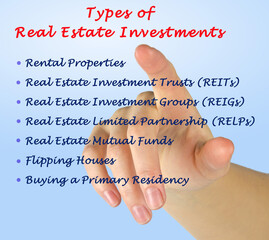Real estate can offer diversification to an investment portfolio, reducing risk by adding exposure to a different asset class. It can also be a source of passive income.
Leverage is a powerful tool for increasing your return on investment in real estate. However, it is important to understand the risks and rewards before investing in a particular property. Center For Work Life will give you ideas on what you should do.

Flipping Properties
Real estate is a great way to earn an income, whether you own commercial or residential property. You can rent out space and collect monthly rent checks from tenants such as hair salons, pizza restaurants, or mattress stores. This income can help you pay the mortgage on your property or add it to your savings. It also serves as a hedge against inflation.
However, it is important to remember that any property investment comes with a certain amount of risk. Even the most experienced investors experience a few flops from time to time. This is because the profits of real estate investing can be volatile and depend on several factors, including market conditions.
If you are looking to make a fast profit through flipping properties, then you will need to be very knowledgeable about the local real estate market and construction. You will also need to be able to identify a good deal when you see one. You can learn how to do this by studying property values and analyzing comparable sales in the area. It’s also a good idea to work with an investor-friendly real estate agent who can help you find the right deals.
Moreover, you will need to be able to estimate renovation costs accurately. Otherwise, you could wind up losing money on your flip. This is why you should use a tool like BiggerPockets’ investment calculators to determine the maximum potential return on a property before making an offer.
It is also helpful to know what the average ROI for a house flip in your market is. This will give you an indication of how much competition to expect and in which markets to focus your investing efforts. If the ROI is low, you’ll need to invest more capital in each property and ensure that the renovations are completed correctly.
Another risk associated with flipping properties is the possibility that the property won’t sell. This can happen for several reasons, including a slow housing market or bad location. If this happens, you will need to either sell the home at a loss or turn it into a rental property. This will reduce your profit margins but still provide you with a steady stream of income.
Residential Properties
The real estate sector accounts for a large chunk of the economy and offers several investing opportunities. However, it’s a complex industry that requires significant upfront capital to get started and ongoing maintenance costs that can eat into your returns. Investing in property also requires familiarity with the nuances, variables, and risks that drive ever-fluctuating property markets.
The most common way to invest in real estate is by purchasing and holding a residential property. This can be a great option for people with do-it-yourself (DIY) skills and enough capital to cover the upfront expenses of renovation and the initial mortgage loan. The owner can then rent out the home or live in it and earn income from tenants, or they can sell the property at a profit after a few years. Another option is to purchase a duplex or accessory dwelling unit (ADU) that allows you to rent out one part of the property while living in the other.
Those who are looking for a more hands-off approach can buy REITs, or real estate investment trusts, that specialize in buying and managing properties. REITs are publicly traded companies that offer investors the chance to diversify their portfolios with exposure to commercial and residential properties without directly owning any physical buildings. REITs can be purchased in a traditional brokerage account or through exchange-traded funds (ETFs) that track multiple REITs. New investors with limited capital can also get exposure to REITs through online real estate crowdfunding platforms that connect investors to property development projects.
In addition to being more hands-off, REITs are also often more liquid than direct investments in a single property. This liquidity makes REITs a popular choice for new investors who want to add real estate to their investments but lack the money or time to manage a physical property. In addition, REITs can offer a variety of tax benefits that are not available with other investments. For example, rental income from a real estate investment can be deducted from your taxes, as can the cost of repairs and other operating expenses.
Commercial Properties
The commercial real estate sector includes shopping centers, industrial complexes, office buildings, and multifamily apartment buildings. It is a highly specialized market that provides investors with an opportunity to earn rental income and capital appreciation. Investing in commercial real estate can also be an effective way to diversify your portfolio. This type of investing is considered passive because it does not require active management and can be a good addition to your retirement account.
Investors may buy and sell properties on their own or through a real estate investment trust (REIT). REITs are publicly traded investments that offer investors access to the commercial property market without having to purchase individual assets directly. Investors can also gain exposure to a particular sector by purchasing a REIT ETF that invests in multiple REITs.
Unlike residential real estate, commercial properties typically require larger capital investment amounts. However, they can provide greater returns. Additionally, they often offer more stable cash flow and higher rental income. Investing in commercial properties can also be an excellent hedge against inflation, as rents tend to increase more quickly than the rate of inflation.
To get started in the commercial real estate industry, you can attend networking events and meet local real estate investors. These connections can help you land your first deal or find a mentor to guide you through the process. In addition, you can attend educational seminars to learn about the market and develop your skills.
Once you’re ready to make your first commercial property investment, you must complete due diligence. This means researching the market, analyzing financing options, and calculating the financial feasibility of each potential deal. It’s important to have a system in place to streamline the underwriting process. As you become more comfortable evaluating commercial deals, you’ll be able to identify the best opportunities and avoid bad ones.
Real estate investment is an attractive option for many new investors because it offers the security of owning a tangible asset. Unlike stocks and other ethereal investments, real estate will retain its value even in turbulent markets. In addition, it is relatively easy to manage and requires fewer expenses than other types of investments. However, investors should remember that real estate is not a surefire investment, and they should seek advice from experts before making any decisions.
Rental Properties
Rental properties are a great way to earn passive income in the country. They can be found in many markets and all shapes and sizes. However, it’s important to understand the risks and rewards of each type of rental property.
One of the most popular rental properties is a single-family home. This investment can be fairly low-risk, especially if you invest in a market with stable job growth and high population density. This kind of rental property also offers tax advantages.
Another type of rental property is a multi-family home or apartment building. These types of properties typically offer several rentable units and adhere to the economies of scale principle. Multi-family homes or apartment buildings can be a bit more complex and expensive to own, but they have the potential for greater returns. Luxury rental properties, on the other hand, target high-end tenants and can come with a host of costs and fees.
When purchasing a rental property, it’s important to know your investment style and what you are looking for from the purchase. Investors who are more involved can opt for the buy-and-hold strategy or attempt to time the market by flipping properties. However, this strategy can be risky if you’re trying to time the market during a downturn.
A buy-and-hold strategy involves acquiring rental properties and retaining them under ownership for an extended period, which can be lucrative when the real estate market is favorable. This type of investment can be passive, as monthly rental income can cover the mortgage payment, or active, with an investor taking on hands-on tasks like negotiating a better deal on the property or renovating the property to increase its value and profitability.
Once you have a clear idea of your investing style and what you are looking for from a rental property, it’s a good idea to start attending networking events as soon as possible. This can help you meet mentors, potential investors, and private lenders who can assist with your financial goals. It’s also helpful to pay off existing debt before making a large investment and save up for a down payment, which can be as much as 20%.
